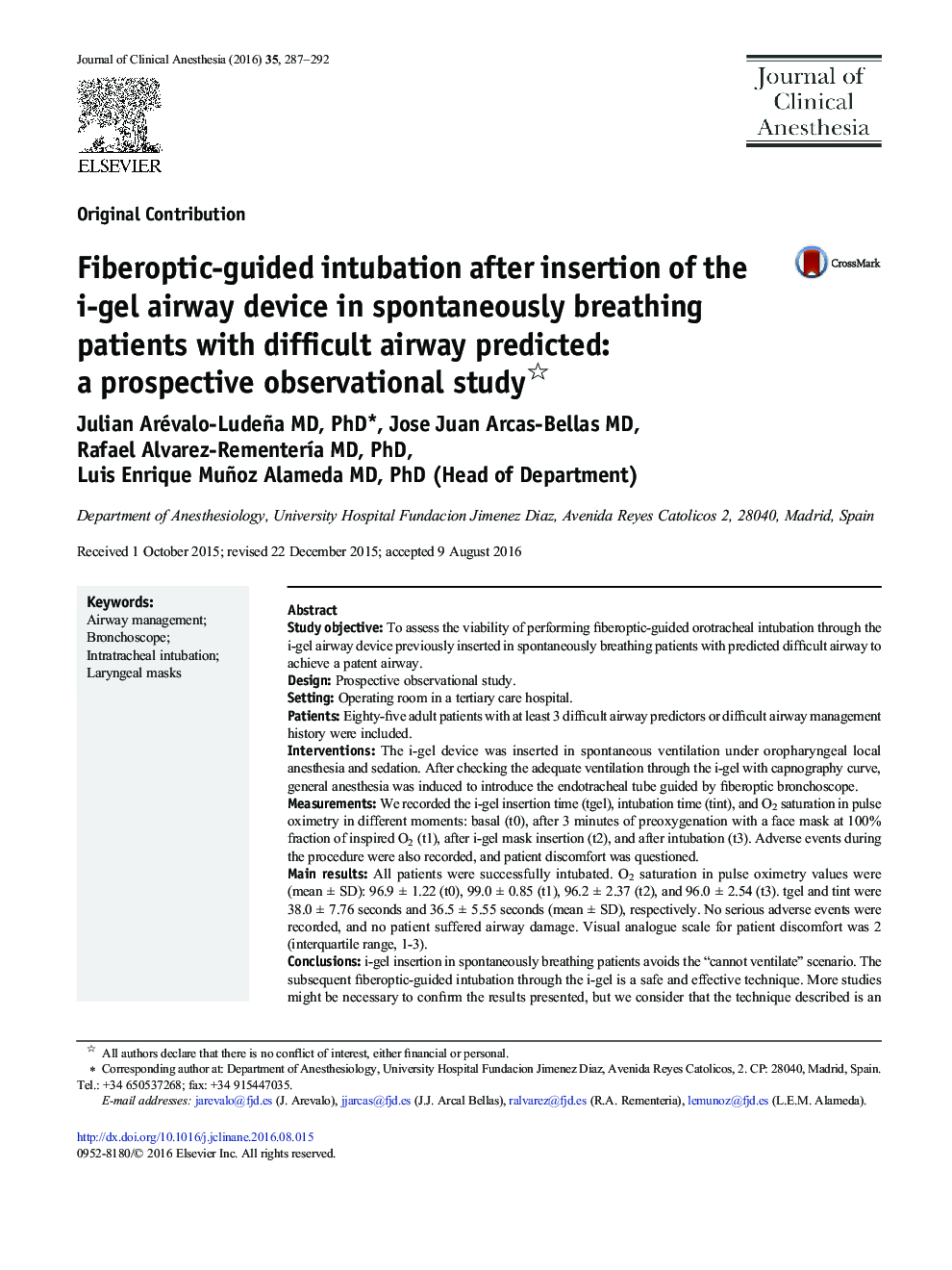| Article ID | Journal | Published Year | Pages | File Type |
|---|---|---|---|---|
| 5884300 | Journal of Clinical Anesthesia | 2016 | 6 Pages |
â¢i-gel insertion in awake patients avoids the “cannot ventilate” scenario.â¢Fiberoptic intubation through the i-gel device is a safe and effective technique.â¢i-gel removal after intubation can be safely performed using Magill forceps.â¢i-gel device plays a fundamental role in difficult airway management.
Study objectiveTo assess the viability of performing fiberoptic-guided orotracheal intubation through the i-gel airway device previously inserted in spontaneously breathing patients with predicted difficult airway to achieve a patent airway.DesignProspective observational study.SettingOperating room in a tertiary care hospital.PatientsEighty-five adult patients with at least 3 difficult airway predictors or difficult airway management history were included.InterventionsThe i-gel device was inserted in spontaneous ventilation under oropharyngeal local anesthesia and sedation. After checking the adequate ventilation through the i-gel with capnography curve, general anesthesia was induced to introduce the endotracheal tube guided by fiberoptic bronchoscope.MeasurementsWe recorded the i-gel insertion time (tgel), intubation time (tint), and O2 saturation in pulse oximetry in different moments: basal (t0), after 3 minutes of preoxygenation with a face mask at 100% fraction of inspired O2 (t1), after i-gel mask insertion (t2), and after intubation (t3). Adverse events during the procedure were also recorded, and patient discomfort was questioned.Main resultsAll patients were successfully intubated. O2 saturation in pulse oximetry values were (mean ± SD): 96.9 ± 1.22 (t0), 99.0 ± 0.85 (t1), 96.2 ± 2.37 (t2), and 96.0 ± 2.54 (t3). tgel and tint were 38.0 ± 7.76 seconds and 36.5 ± 5.55 seconds (mean ± SD), respectively. No serious adverse events were recorded, and no patient suffered airway damage. Visual analogue scale for patient discomfort was 2 (interquartile range, 1-3).Conclusionsi-gel insertion in spontaneously breathing patients avoids the “cannot ventilate” scenario. The subsequent fiberoptic-guided intubation through the i-gel is a safe and effective technique. More studies might be necessary to confirm the results presented, but we consider that the technique described is an adequate alternative to classic orotracheal intubation with fiberoptic bronchoscope in spontaneous ventilation for certain patients with predicted difficult airway.
